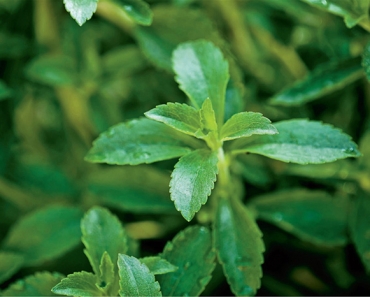Pokeweed is a perennial native to North America and naturalized around the Mediterranean and in northern Africa. It bears spikes of greenish white flowers, followed by juicy, deep purple berries that are a good source of food for birds. Native Americans used the berries to stain baskets a dark blue, and poke berries (called ink berries in some localities) provided one of the first natural inks used by settlers of the New World.
The ink proved so lasting that it can still be seen on period documents preserved in museums. In the 19th century, tinctures made from the root were popular for joint pain, but poisonings were common due to the plant’s toxicity. Pokeweed berries, roots, leaves, stems, and seeds are poisonous.

Plant profile
Common Names: Inkberry, Poke, Pokeroot, Pokeweed
Description: Perennial, up to 9 feet tall; oblong leaves up to 12 inches long, with an unpleasant scent; white or purplish flowers in terminal racemes followed by deep purple berries
Hardiness: To Zone 2
Family: Phytolaccaceae
Flowering: June through September
Parts Used: Berries for birds; medicinal use not recommended
Range/Habitat: Throughout North America; roadsides and edges of fields and clearings
Culinary use
Eating pokeweed is not recommended, as it can cause nausea, vomiting, abdominal cramps, and diarrhea. Traditionally, the young shoots were cooked and eaten as a spring vegetable in parts of the southeastern United States, but foragers recommend against this practice unless you are very experienced in preparing this species.
Medicinal use
Pokeweed has stimulant, purgative, and emetic properties. Native American people and traditional herbalists used the roots, berries, and leaves to treat conditions such as acne, arthritis and joint pain, fungal infections, scabies, folliculitis, and sore or infected nipples. A few modern herbalists recommend the herb to stimulate the thyroid or lymphatic system.
Caution: Pokeweed is highly toxic. When consumed, all parts of the plant can cause digestive irritation, vomiting, diarrhea, and decreased blood pressure. Overdoses can be fatal. Pokeweed should be used only under the guidance of a qualified health practitioner, if at all. Some authors recommend handling this plant with gloves, as toxins can be absorbed through cuts, scrapes, and other breaks in your skin.
Other uses
Poke berries can be used to create a red, brown, or pink natural dye. In a hedgerow or wild area of your landscape, pokeweed berries provide food for many wild birds.
How to grow it
Pokeweed thrives in woodland areas and open spaces in rich, moist, well-drained soil in full sun or partial shade. It is rarely grown in the garden and can become invasive. If you choose to grow pokeweed in a wild area as a wildlife food or ornamental, plant the seeds or root divisions in a location with moist but well-drained soil and full sun to partial shade. Harvesting the plant for medicinal use is not recommended. Pokeweed self-seeds readily throughout its native range.



